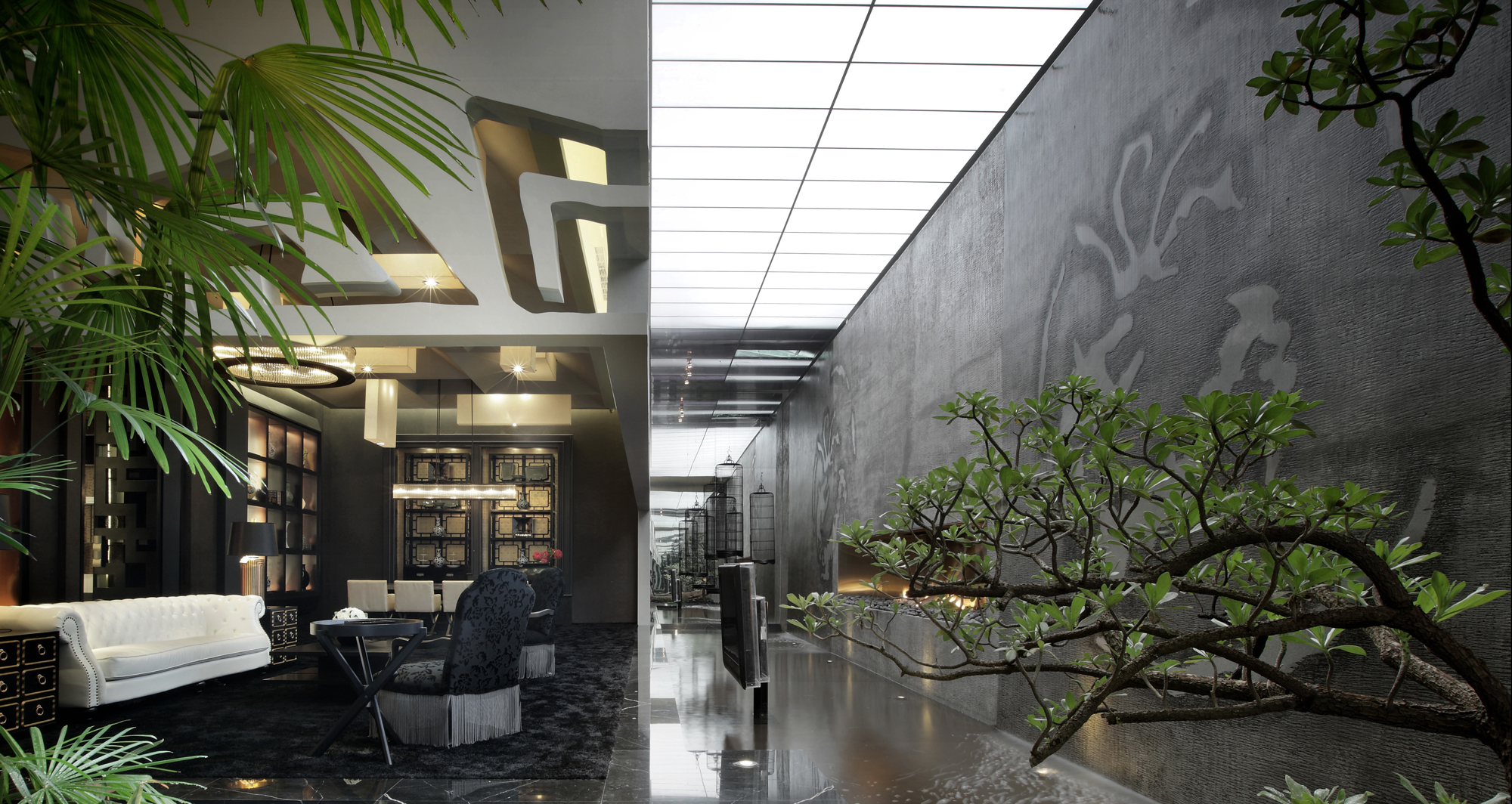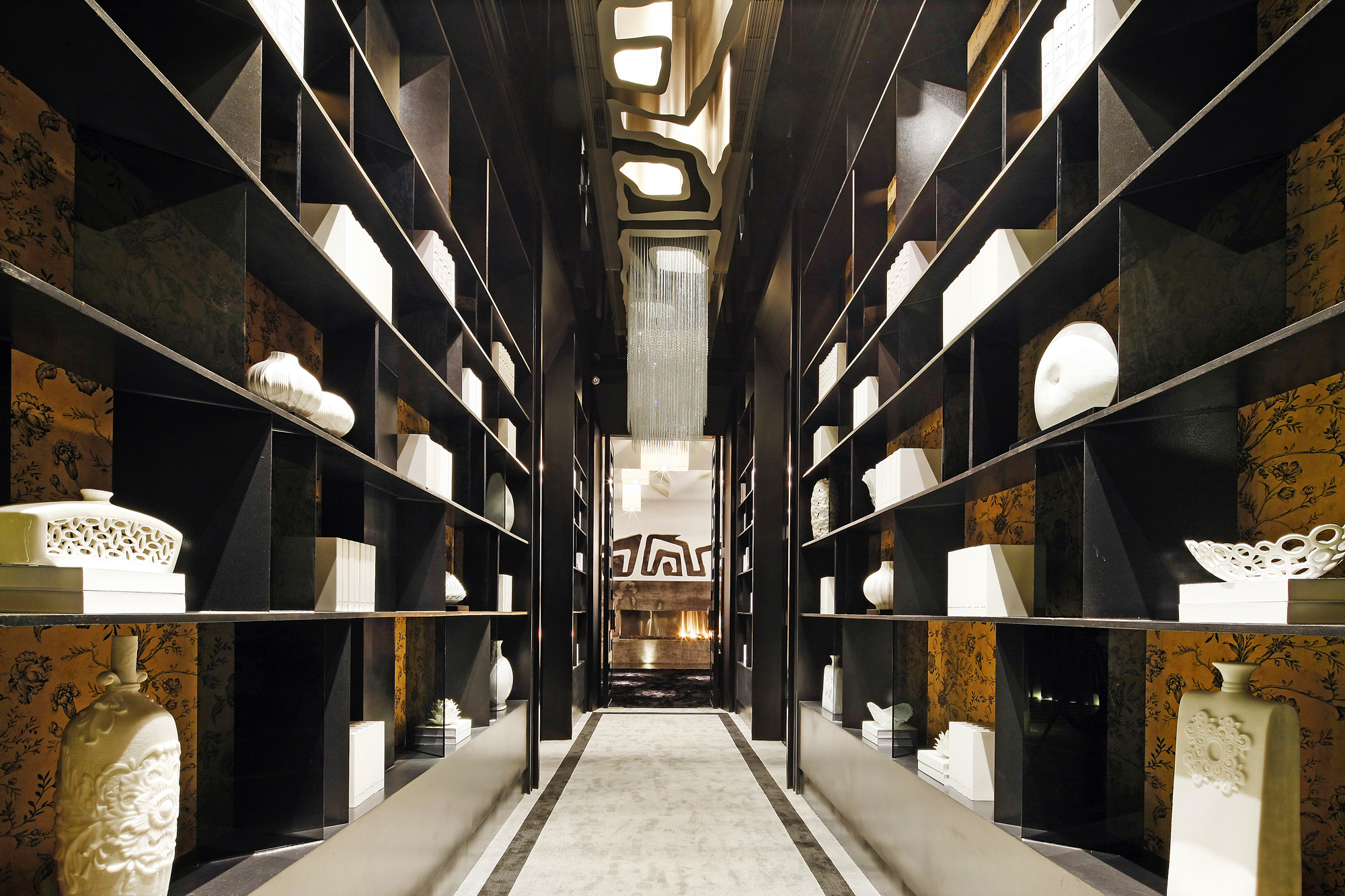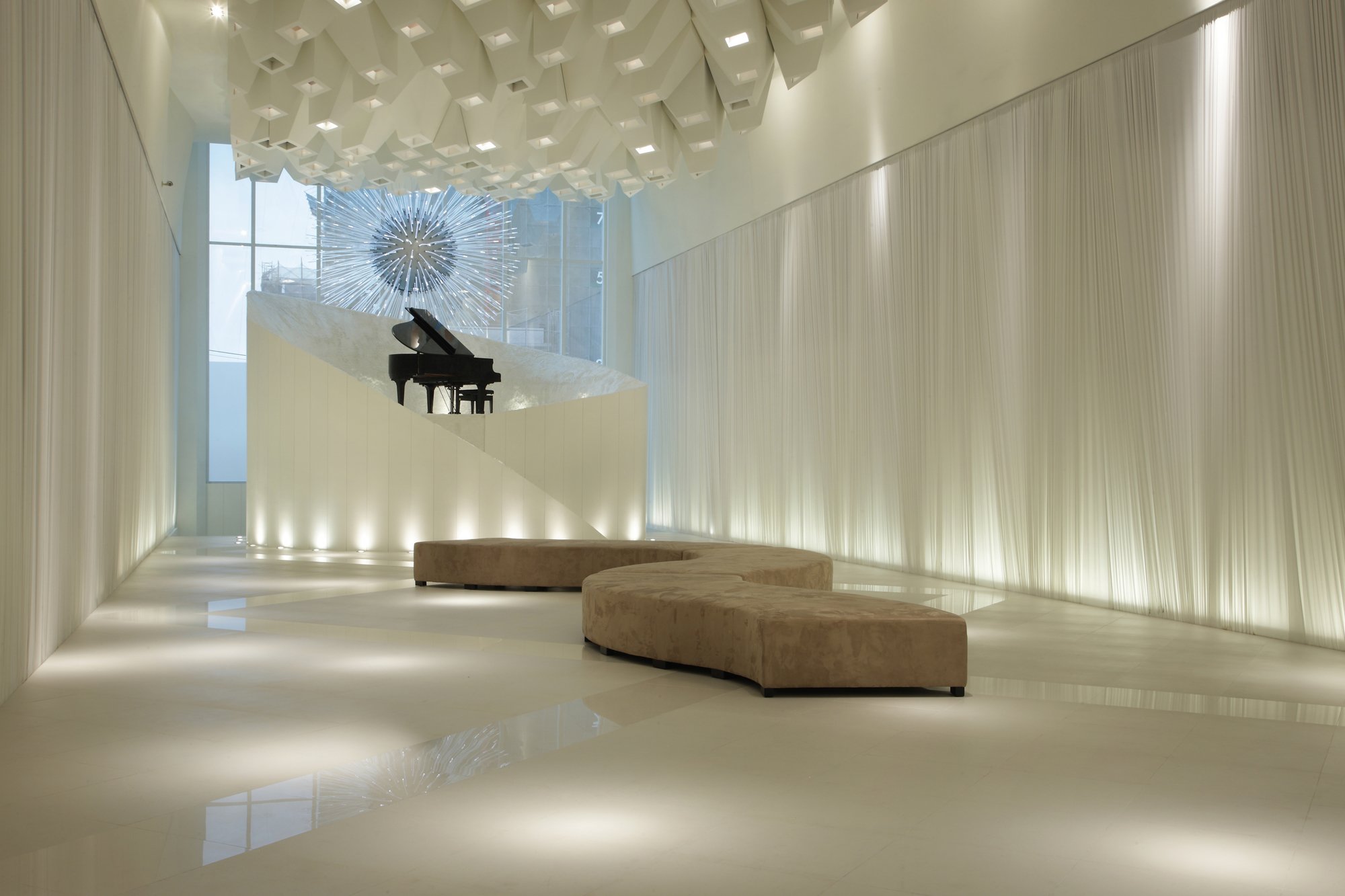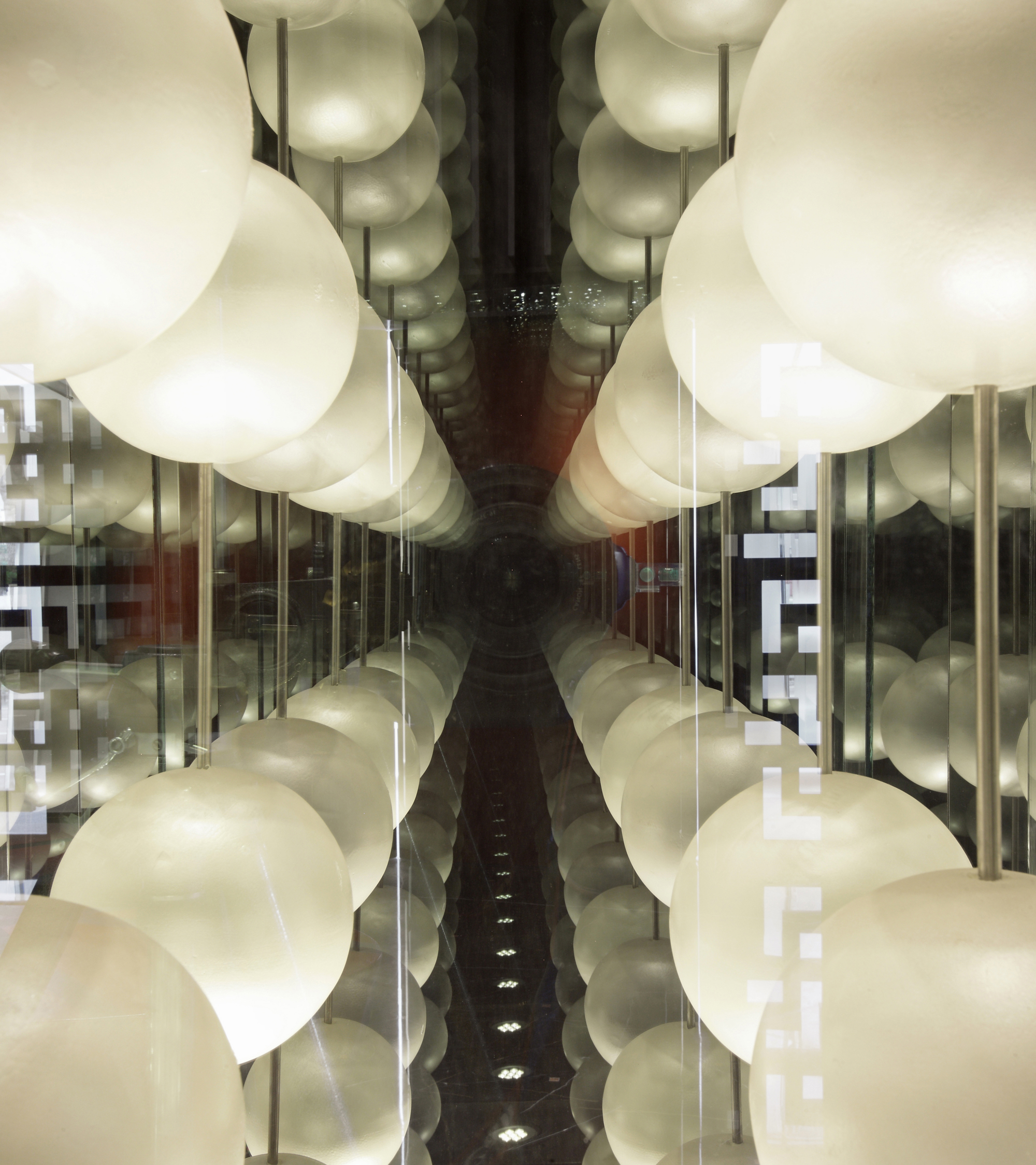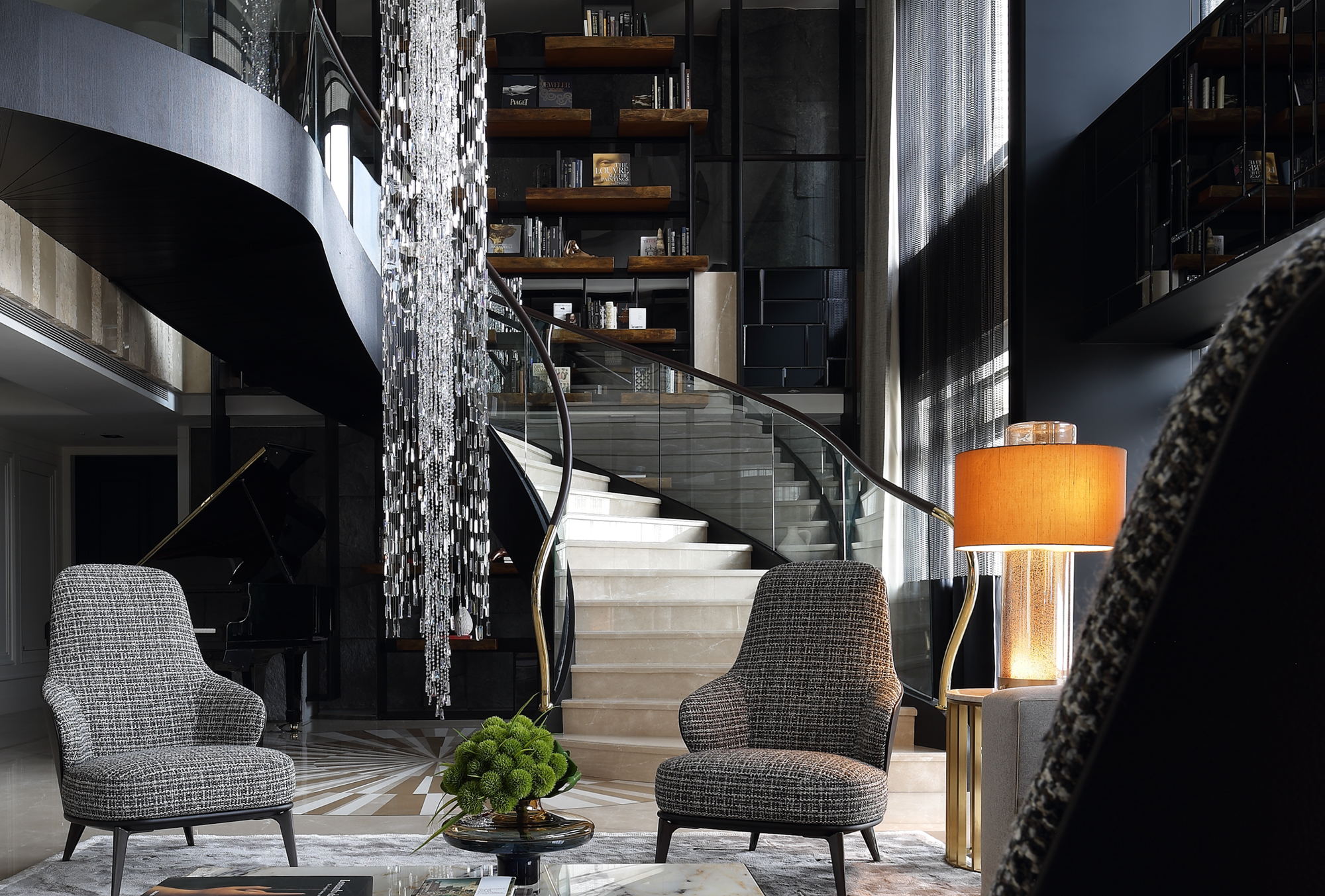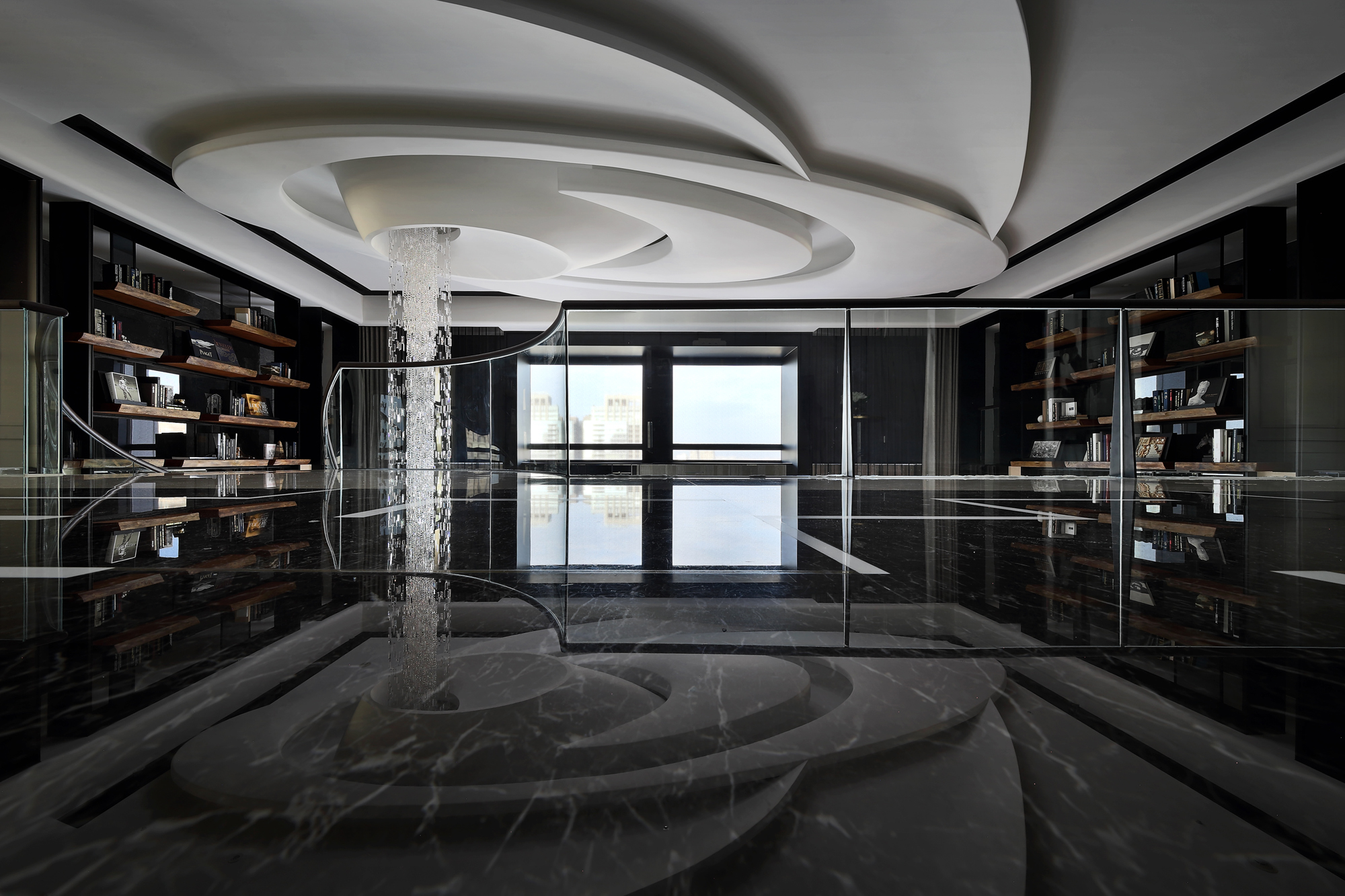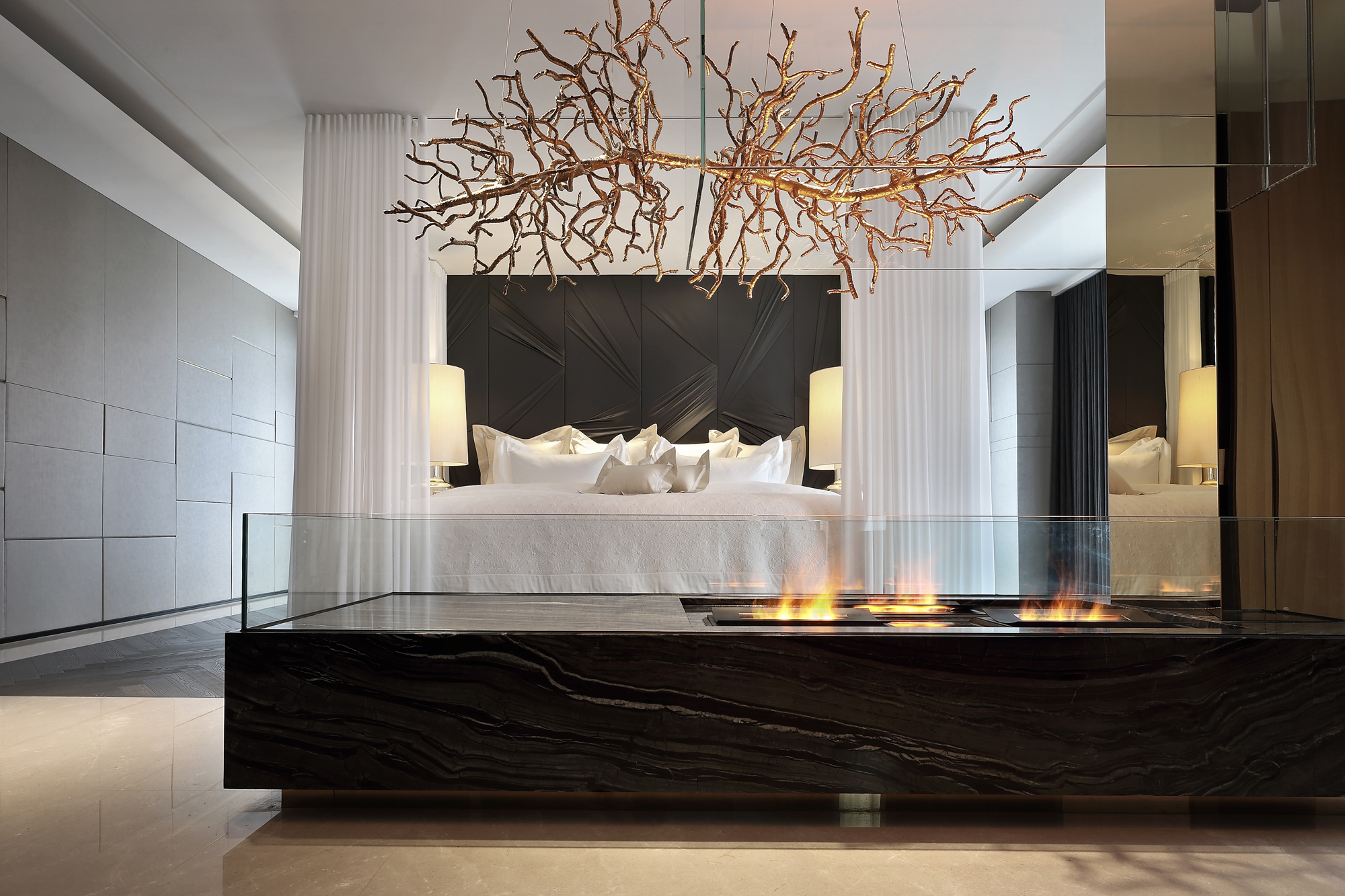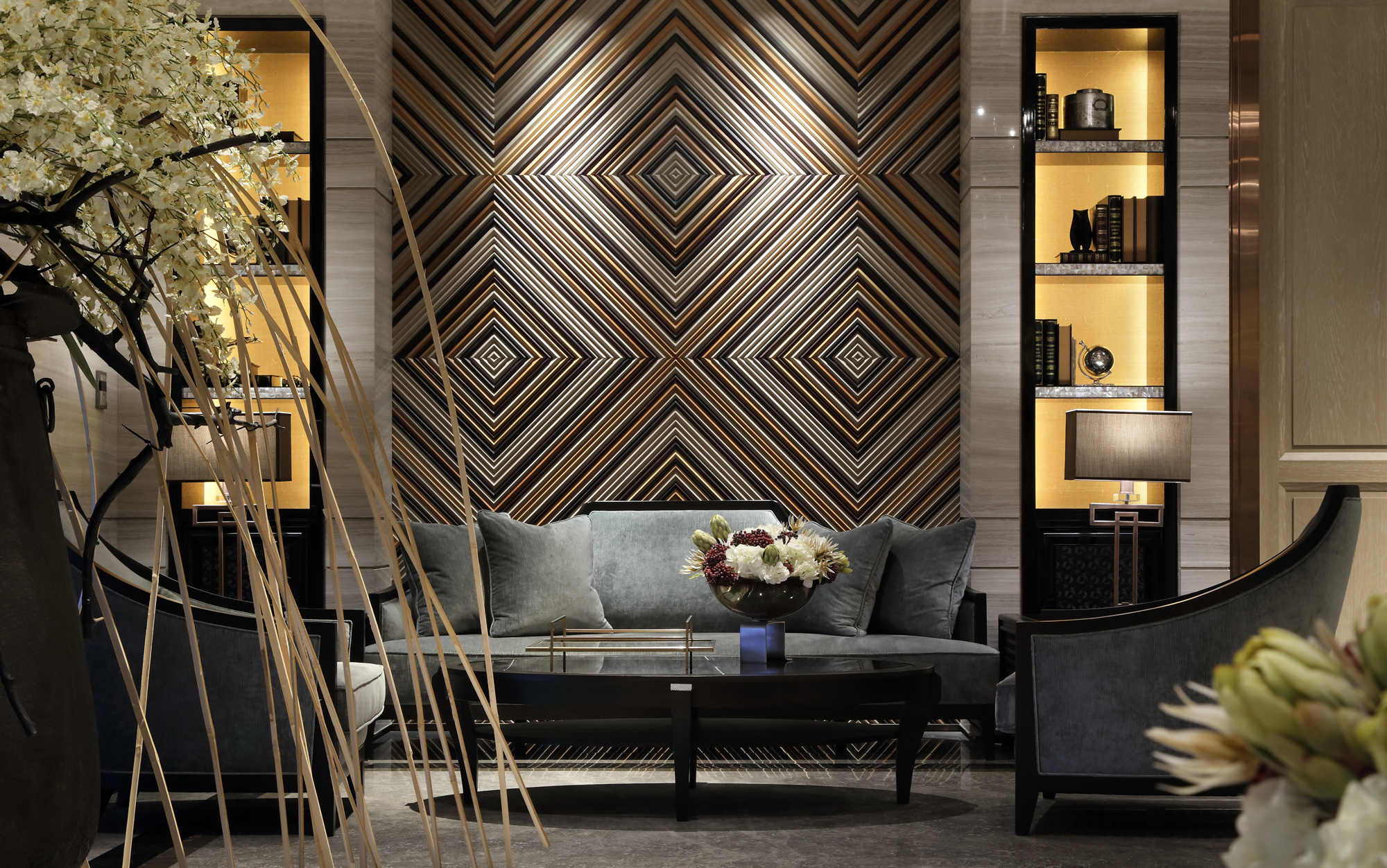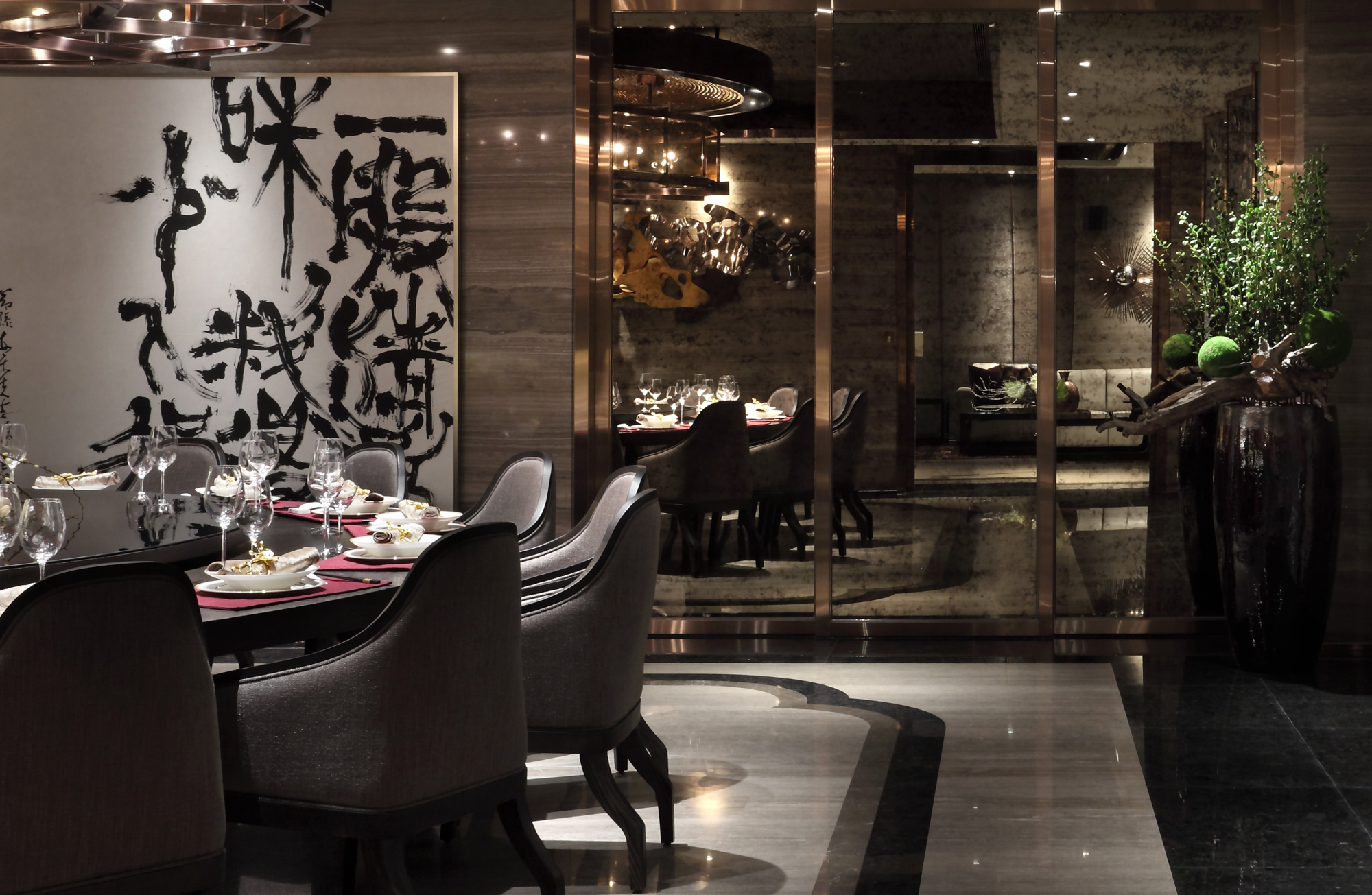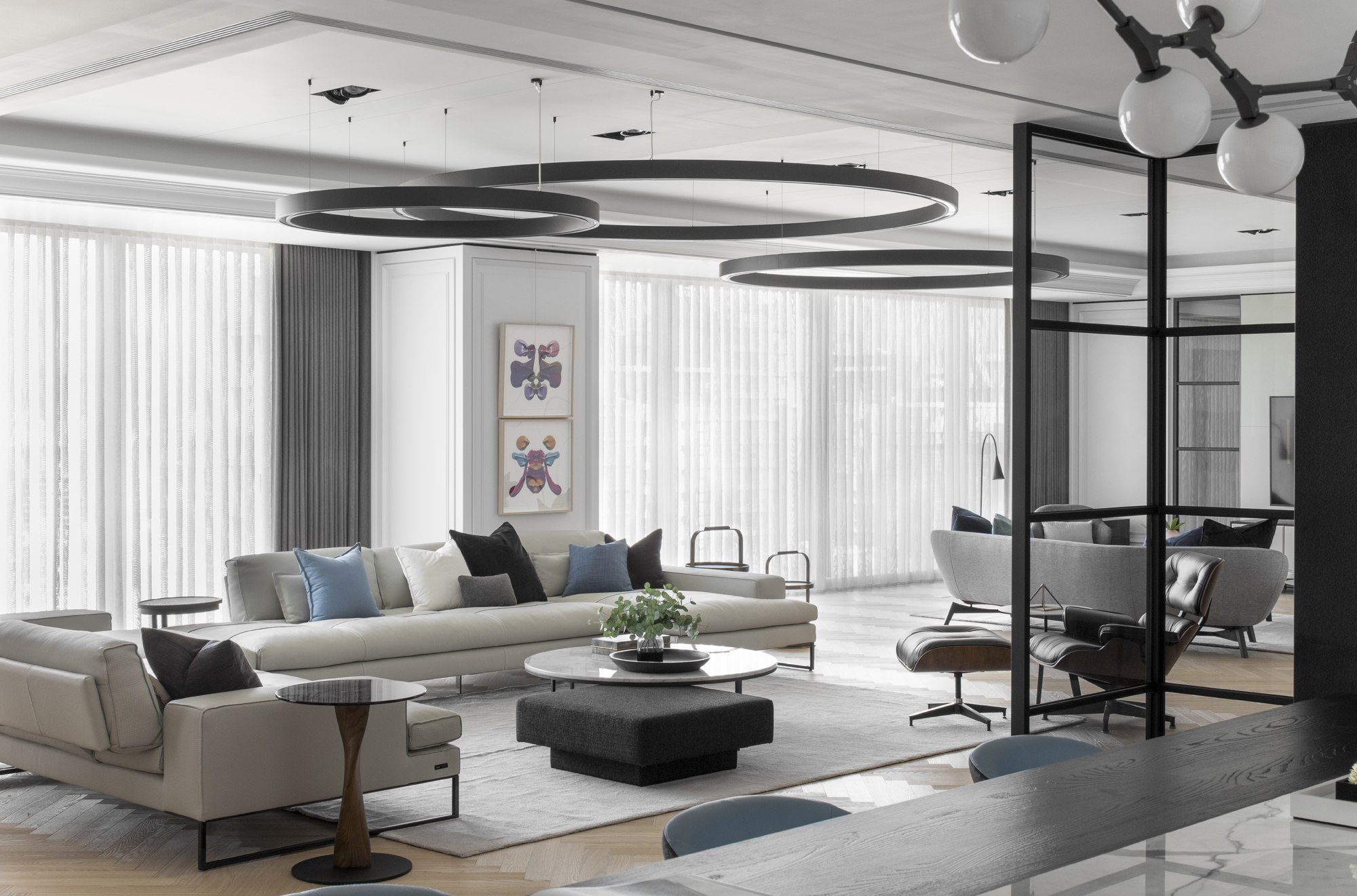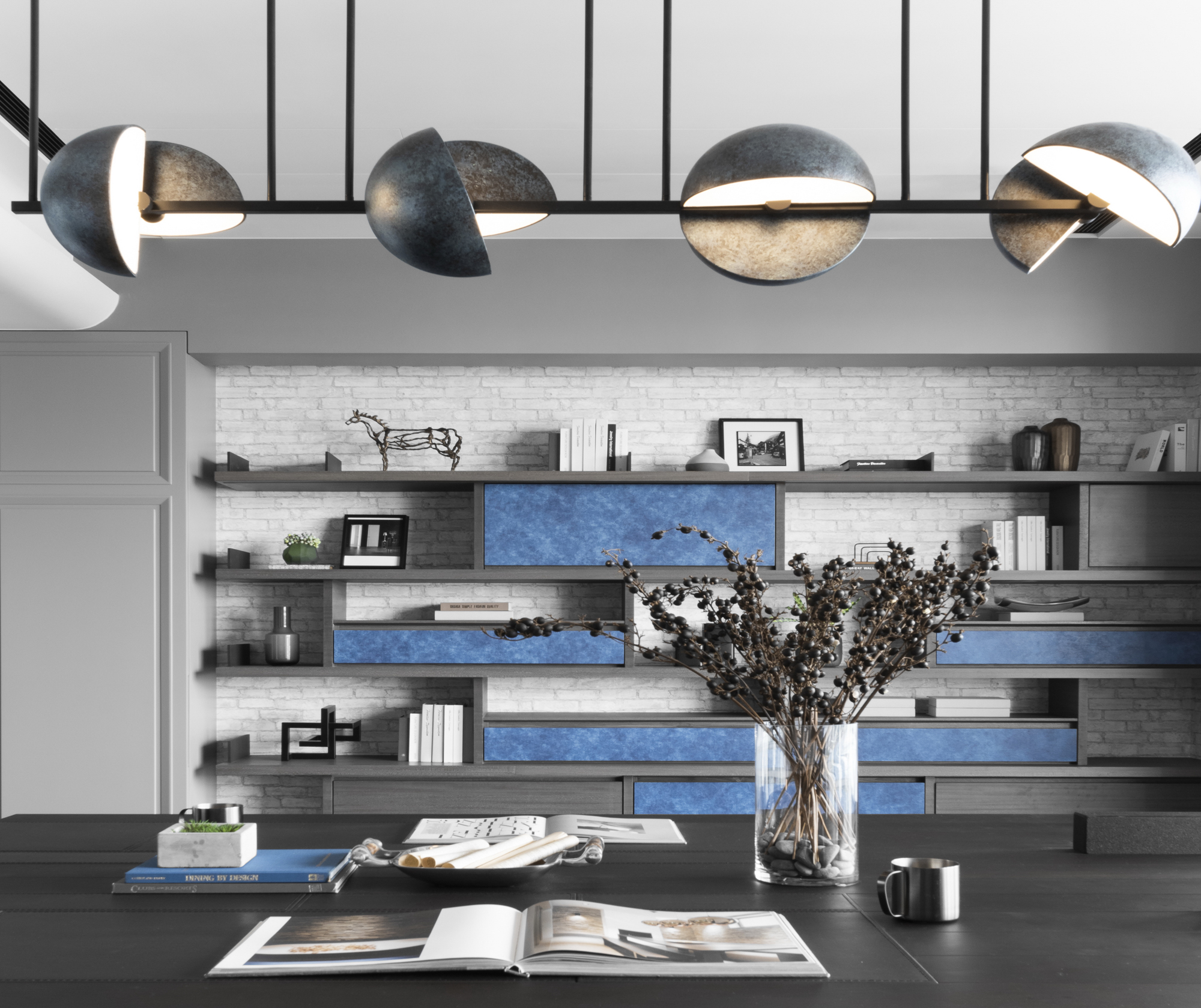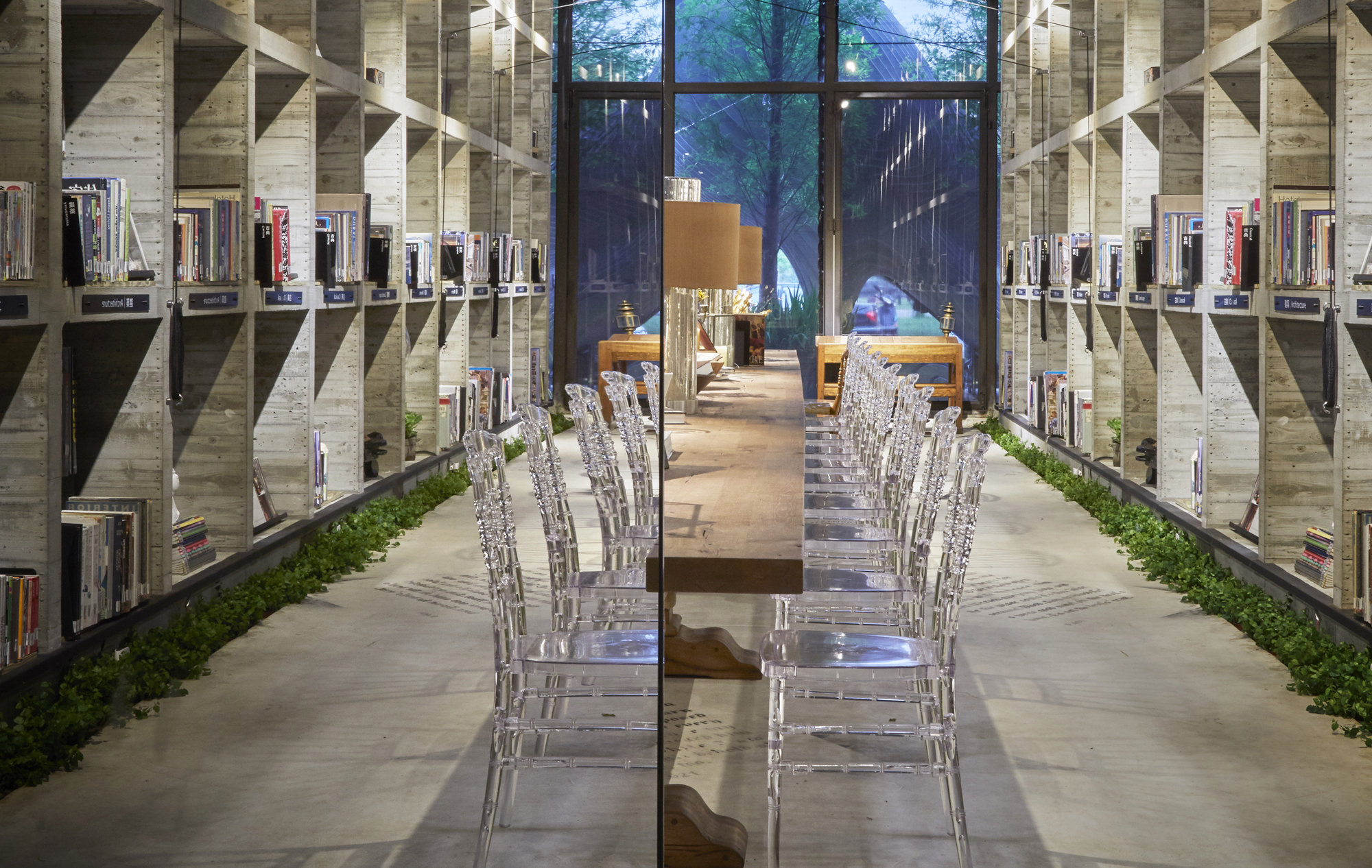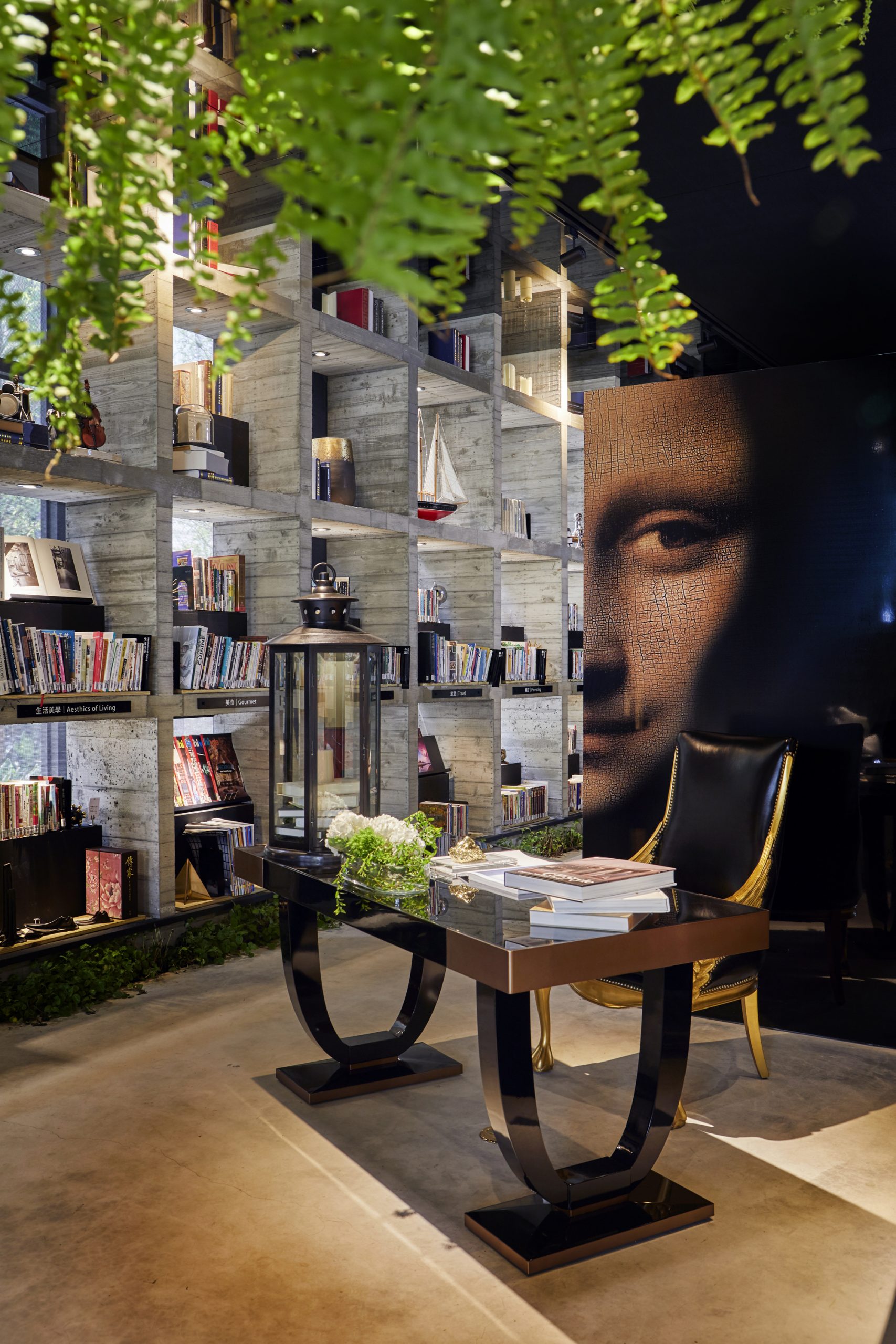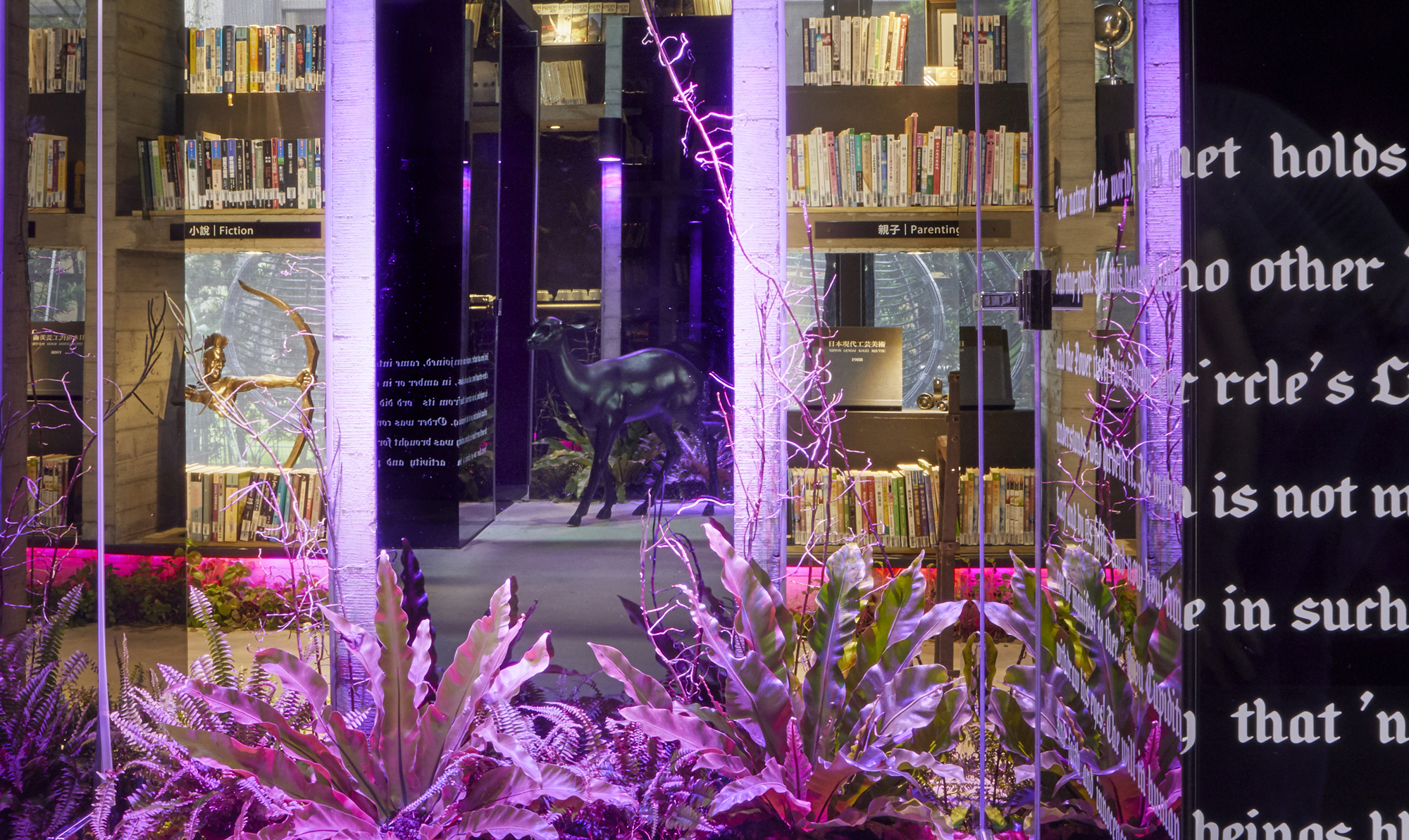張清平先生是天坊室內計劃有限公司創世人,這是一家位於台灣中国屢獲殊榮的多學科設計公司。他以獨特的心奢華設計獲得國際肯定,展現出他卓越的成就和對設計的熱情。亞洲設計師名錄與張清平先生聯繫,來理解他的設計理念和其中的訊息。
Chang Ching-ping is the founder of Tienfun Interior Planning, an award-winning multi-disciplinary studio in Taipei. His work exemplifies his passion and exceptional mastery in design, seamlessly blending Eastern and Western influences to create exquisitely luxurious interiors. Asia Designers Directory connects with Chang Ching-ping to learn more about his design philosophy and the messages behind it.
作為天坊室內設計的創始人和總設計師,您認為經營成功的設計企業最重要的方面是什麼?
As the founder and chief designer of your practice, what do you think is the most important aspect of running a successful design business?
我認為對於設計公司來說最重要的核心價值就是品牌與團隊。
這兩者之間可以彼此促進,同時也會互相影響。講到品牌,很多人認為是屬於行銷手段或是講求包裝,在經營設計公司四十年的時間,我認為品牌所代表的就是一種承諾與實力的整合,更實質的來說就是創造美感特色、設計力及服務力。品牌需要不斷的精進,能夠解碼甲方內心的真實需要與理想追求,品牌同時也是凝聚團隊力量的重要因素,讓我們在協作與合作中發揮出整體優勢。
In the field of interior design, I believe that the foundations of any successful practice rest upon two crucial pillars: the brand and the team. These two elements are interdependent. While some may perceive a brand as a marketing tool, my four decades of experience in the design industry have instilled in me the unwavering belief that a brand encompasses much more – it serves as a tangible representation of a practice’s commitment and capabilities. In practical terms, a brand becomes an extension of a practice’s design expertise and service excellence. A brand must continually evolve to reflect the needs and aspirations of its clients. Concurrently, the brand must align with the strengths of the team, enabling individuals to harness collective advantages through collaboration and cooperation, thus fostering growth and advancement.
您的作品榮獲了無數的贊譽,您能與我們分享一下您職業生涯中的重要里程碑,並說明它們是如何影響您的職業發展軌跡的嗎?
Your work has garnered many international accolades. Could you share with us some of the significant milestones in your career and explain how they have impacted the trajectory of your career?
讓我與大家分享天坊的特色案例。「龍的DNA」是一個超越想像以及跨越文化,融合多重功能的售樓部。把堅持與創新都放在傳統上,不只是創作出造型炫目的建築量體,在設計里,有東、西方世界都熟悉的老靈魂。
以原創東方蒙太奇設計手法,解構龍的DNA,衍生造型與建築肌理,將古代智慧現代化,融入空間的皮層,西方設計中國化,融入內部佈局的結構,中西合併國際化,帶來新的感動與新的希望。借著龍的DNA,詮釋心東方心奢華的理念,讓中國設計在全球發聲。
Let me share a selection of projects we have undertaken, each exemplifying our unique approach to design. One such project is “龍的DNA” (Dragon’s DNA), a sales gallery that transcends conventional boundaries, blending cultures harmoniously. This project goes beyond tradition to create visually-stunning architectural structures that seamlessly integrate design elements from both the East and the West.
Using original montage design techniques, the deconstruction of the dragon’s DNA gives rise to unique forms and architectural textures, modernising ancient wisdom. The graceful integration of Western design elements artfully blurs the delineation between Eastern and Western influences. This convergence evokes a range of new emotions and fosters a sense of renewed optimism. Furthermore, this design serves as a platform to showcase the appeal of Chinese designs on the global stage.
- Dragon’s DNA Sales Gallery (龍的DNA售樓)
- Dragon’s DNA Sales Gallery (龍的DNA售樓)
- Dragon’s DNA Sales Gallery (龍的DNA售樓)
- Dragon’s DNA Sales Gallery (龍的DNA售樓)
- Dragon’s DNA Sales Gallery (龍的DNA售樓)
「大明大放」通過有效溝通、深入瞭解和對生活細節的精心關注,延伸出一系列相應的概念,從空間的開放與隱秘、光線的明與暗、層次的對比與漸變等對應關係中,創造出流動感的空間堆疊與穿透,展現出一個光線渲染的對應空間。 為這一些場域製造對稱和反差的關係,也因此,讓人們可以改變認識空間的角度, 引領使用者超越既定的想像,內心深處的願望也獲得了實現。
The design of the “大明大放” project, meaning “bright and open space”, is rooted in the principles of effective communication, profound understanding, and meticulous attention to detail. Building upon these fundamental pillars, a harmonious convergence of various concepts gives rise to a space that captivates, skillfully balancing openness and privacy, brightness and darkness, and interweaving multiple layers. By establishing a dynamic interplay of symmetry and contrast, a sense of fluidity permeates. This design approach challenges one to reconsider their perception of space, encouraging a transformative perspective.
這些案件讓我深層的體驗到設計師的意義不僅是創造美好的空間與建構環境、自然、與人之間的美好關係,更在於引導人們享受美好環境下的生活。這些案件獲得了國際獎項的肯定,其源頭都是經由業主的欣賞和支持,設計構想才可能實現成就。
These projects have deeply impressed upon me that the role of a designer extends beyond creating beautiful spaces and fostering harmonious relationships between the environment, nature, and people. It also involves guiding individuals to embrace a life of beauty in these environments. These projects have garnered international acclaim and are well-received by clients, without whom these design concepts would not have come to fruition.
您的設計展現「心東方心奢華」理念。請問您這個概念背後的關鍵設計考慮是什麼?
Your projects display a luxurious, modern oriental appeal. Can you elaborate on the key design considerations underlying this concept?
心東方是生活的一種思維,東方若水一樣,具有不爭、奮進、寬容等特性。思考的關鍵就要用人的故事延續生活的軌跡,用歷史的軌跡做我們中國人的設計。
“心東方心奢華”, meaning “Heart of the Orient, Heart of Luxury” is not just a concept, but a mindset that embodies the Eastern culture, akin to the fluid and adaptable nature of water. Thoughtful design approaches hinge upon the art of reflecting life through personal narratives.
- Garden Square (花園廣)
- Garden Square (花園廣)
- Garden Square (花園廣)
- Garden Square (花園廣)
- Garden Square (花園廣)
- Garden Square (花園廣)
我希望所有中國設計師都要做我們中國的設計,而不是抄襲西方的東西。我們可以學習西方的精神,把我們的文化底蘊通過解析,注入到我們的設計理念里,不同年代,需求就不同,唯一相同的是設計的質感。於我而言東方不是一種風格,東方是一種文化的理解,東方是一種深入血脈中的思維。正因此我希望:我的設計來自東方,我的設計改變東方。
I encourage Chinese designers to embrace our cultural heritage in their designs, going beyond mere imitation of Western styles. We can learn from the spirit of the West and direct our rich heritage into design concepts uniquely rooted in our identity. While design approaches and styles may evolve over time, the unwavering pursuit of design excellence remains a constant. The East, to me, is more than just a style; it encompasses a deep-rooted culture and a distinct way of thinking. I strive for my designs to originate from the East and undergo a radical transformation through innovative design practises.
何謂心奢華?我稱浸潤在傳統文化中找靈感的過程為『心奢華』,即用心的奢華。不論是設計元素的選擇或靈感運用,都秉持著中體西用的設計法。特別是將『與人有所連結的元素』,在新時空中予以轉化。利用西方設計語匯重賦東方人文精神,創造出既古典又新穎的設計。我希望能超越歷史的影響,用「慢靜雅簡善」創造東方的心奢華!
“心奢華” or “heart of luxury” denotes a meticulous and thoughtful approach to indulgence. From selecting design elements to applying inspiration, my commitment lies in seamlessly integrating Eastern and Western influences. Specifically, my objective is to rejuvenate “elements connected with people” in the context of modern time and space. By infusing Western design vocabulary with the essence of Eastern spirit, the “心奢華” conveys serenity, tranquility, and elegance.
- 東方之冠公設
- 東方之冠公設
- 東方之冠公設
如果奢華的細節深度不夠,那就是一種俗氣,把一件作品要做到極致才能稱之為奢華。細節是什麼?細節是一件事情的內涵,質量是一件事情的外表。心奢華好在哪裡?好在細節。奢華講細節。奢華是一種精緻的講究,奢華是一種工匠精神。
Sophistication is compromised when we overlook details. True luxury resides in achieving perfection in every aspect of creation. But what exactly do these details entail? These details encompass the essence, while quality relates to outward appearance. The distinctive nature of the “Heart of Luxury” lies precisely within these intricate details. Meticulous attention to detail is what brings about luxury.
老子說:「天下大事必作於細,天下難事必作於易」。從其中我理解到的意思:作大事必須從小事開始,天下的難事,必定從容易的作起。所以,大禮不辭小讓,細節足以決定設計的成敗。細節是什麼?對於我而言細節可以是一句話,一個動作,一個念想……細節像沙礫一樣,感覺很微不足道,很容易被忽視。 我認為在設計里細節,就是指那些看似普普通通、平平凡凡的,卻又十分重要的可以為設計創造差異之處。
In the words of Lao Tzu: “The world’s most difficult affairs begin in ease. The world’s greatest affairs always begin in the small”. This wisdom imparts upon me the understanding that to achieve greatness, we must start with the smallest of details. Tackling arduous tasks begins with the simplest ones. Therefore, we must not underestimate the significance of details in determining the success or failure of a design. But what exactly do these details entail? Details can be a sentence, a gesture, or a thought. They can be likened to grains of sand, seemingly inconspicuous and easily overlooked. In the design field, details encompass those seemingly ordinary yet pivotal aspects that convey distinctiveness and differentiation.
- Maple Garden (秋紅谷住宅)
- Maple Garden (秋紅谷住宅)
- Maple Garden (秋紅谷住宅)
- Maple Garden (秋紅谷住宅)
- Maple Garden (秋紅谷住宅)
您在台灣的室內設計領域中扮演著重要的角色,並推動了許多旨在推進台灣室內設計行業的倡議。您認為設計師和設計行業在數年里如何演變和成長了呢?
You have made significant contributions to Taiwan’s interior design scene and have been instrumental in driving initiatives to advance the field. How do you perceive the evolution and growth of designers and the overall design landscape in Taiwan over the years?
近幾年「設計」確實逐漸成為各行各業所看到的一項顯學。 美學的基礎扎根與地方發展美學城市的能量帶動,確實讓設計成為一種主流需求。設計師不再只是設計師,不少企業或是單位,也開始力邀設計師擔任顧問,協助診斷企業內部運作、或提供外部產業分析與美學導入。 根據調查台灣有超過八成企業肯定設計的重要性,不僅設計人才的討論度、能見度倍增,設計力更為人們的食衣住行帶來實質的改變。
In recent years, design has emerged as a prominent and undeniable force across diverse industries. The foundation of aesthetics, deeply rooted in the drive to create visually appealing cities, has propelled design into a mainstream demand. Designers are now sought after by numerous companies and organizations as valuable consultants. They become indispensable in various aspects of a business. In fact, surveys indicate that over 80% of companies in Taiwan recognize the significance of design. This heightened acknowledgment has not only raised the level of discourse and prominence for design professionals but has also led to substantial transformations in the everyday lives of individuals.
我投入室內設計領域超過40年。身在其中的室內設計是一個勞心勞力技術密集的行業。其中流程漫長複雜,屬於經營不易的行業,最重要的產業特色,就是高度客制化服務的特性。台灣設計產業已經走到一個很有特色的,十足客制化的現況。
Being involved in the field of interior design for over four decades, I can attest that it is an industry that requires tremendous labour and technical expertise. Processes involved are lengthy and laborious, posing considerable challenges to businesses operating within it. The defining aspect of this industry lies in its emphasis on highly customised services. The Taiwanese design industry places a lot of emphasis on customisation.
過往,室內設計師為了甲方提供服務,專注於滿足業主需求,談不上所謂的公共性。近年來在國際間,設計已經被視為驅動創新的關鍵力量,並開始在各個領域發揮影響力。例如,英國以設計驅動公共設施環境之改造計劃、城市無人機未來發展計劃;歐盟提出包浩斯計劃以公開徵件為組織與社會尋找創新的解決方案;紐約推動以市民為中心的公共服務設計;韓國投入未來前瞻設計研究、支持中小企業聘用設計人才;新加坡鼓勵設計公司朝商管顧問服務轉型;日本積極佈局與培育未來產業所需高階設計人才。近年來,台灣在圖書館、衛生所等公共空間,相繼找上設計師操刀,整合空間、平面、工業等細節,除了讓基礎美學介入每個人的生活,也優化了公部門及企業的場域空間及服務體驗。從這角度看,設計增加了我們的競爭力。走出單純的私領域及商業服務,當代的室內設計師透過一次次異質合作,開啓對話、碰撞,將來可以成為一位廣義的空間專業者,應該也是一種轉變與成長。
In the past, the focus of interior designers was primarily on meeting client needs, with limited consideration for broader public impact. However, in recent years, design has emerged as a pivotal force driving innovation, gaining international recognition and exerting influence across diverse domains. Notable examples include the United Kingdom’s implementation of design-driven renovation projects for public facilities and urban drone development plans. The European Union’s introduction of the Bauhaus project seeks innovative solutions through open calls for organisations and society. New York promotes citizen-centric public service design, while South Korea invests in future-oriented design research and supports small and medium enterprises in hiring design talents. Singapore encourages design firms to transition towards business management consulting services, and Japan actively establishes and cultivates high-level design talents required for future industries.
In Taiwan, designers have been involved in enhancing public spaces such as libraries and clinics, integrating elements of space, graphic design, and industrial design. This approach not only adds aesthetic beauty to people’s lives, but also optimises the environment and service experience of public agencies and businesses. From this perspective, design has significantly enhanced our competitiveness. Interior designers have moved beyond the confines of private domains and commercial services, engaging in diverse collaborations and dialogues to become change agents.
您認為設計師如何才能為社會做出更大的貢獻?您能否分享一些在您的設計實踐中具有社會影響力的項目或作品的例子?
In your opinion, how can designers impact lives and societies through designs? Can you share with us impressionable projects or works that you have undertaken and their value to others?
「樂樂書屋」是一座連結人與自然美好關係的綠意天地,被譽為「豪宅級圖書館」。它融合了森林系風格與頂級建築美學,打造出一個獨特的藝文空間,讓閱讀成為時尚的新趨勢。這座迷人的文化地標為台中帶來了一個充滿藝術氛圍的地標亮點,超越傳統圖書館的空間,巧妙地將博物館的氛圍與設計咖啡館的魅力相結合。它邀請遊客沈浸在一個迷人的世界中,文學與藝術的輝煌交織在一起。
LeLe Books House, often referred to as the “luxurious mansion-level library,” combines the allure of a forest-inspired aesthetic with impeccable architectural design, creating an elevated space where reading is trendy. This landmark in Taichung transcends conventional library spaces by artfully combining the ambiance of a museum with the charm of a design café. It invites visitors to immerse themselves in a world where literature and artistic brilliance intertwine.
- LeLe Books House (樂樂書屋)
- LeLe Books House (樂樂書屋)
- LeLe Books House (樂樂書屋)
- LeLe Books House (樂樂書屋)
美學融入現代生活,其實是將東方的文化透過詩般的生活展現出來,我們做的設計就是要把老祖先留下來的諸多智慧透過設計賦予新的面貌,但生出東方美學延伸的新作品。
Integrating aesthetics into modern life is, in fact, a way of showcasing the culture of the East in a poetic manner. Our design aims to give a fresh interpretation of the wisdom handed down by our ancestors, breathing new life into Eastern aesthetics.
樂樂並非一個傳統的或意義上的書店,樂樂是一個詮釋人與空間,人與自然,人與文化關係的空間。這就是東方美學的內涵。二十一世紀是中國人的世紀,我們不僅與世界同步,更要給予世界東方的指引。空間是死的,有人才有生命力,而書是智慧的來源,人與書的串聯,讓空間活了起來。
LeLe Books House transcends the boundaries of a conventional bookstore, embodying a space that deeply considers the intricate relationships between people and their surroundings, nature, and culture. Rooted in the essence of Eastern aesthetics, it encapsulates the spirit of the 21st century, when the Chinese open up to the global community. Space is lifeless without people, and books serve as the wellspring of wisdom. The connection between people and books brings vitality to space.
樂樂書屋開啓我們多元與包容的設計思維,同時也引發眾人一起對公共藝術的投入,對我們的設計歷程有很深的影響。目的是希望創造一個對人,對自然,對環境,對空間都良善的設計。我們希望在樂樂書屋營造的就是這樣一個善設計的生態系。每一次閱讀,都是知識的增長。每一本書,都是愛的力量。每一場展覽,都拉近人與藝術的關係。每一次的課程,都讓我們更熱愛生活。在與不同基金會共同運作,樂樂的每個部分都能獲得增長,同時也助成其他團體的規模壯大,彼此都更朝向生態系前進,彼此形成自我循環的深度學習,將可創造無限的可能性。如何把身邊的好東西,透過多層次連結互相串接演化,形成一個更大的善循環生態系!樂樂創造愛的流動與知識的流動。
The design of this book store embraces diversity and inclusivity, inspiring our community to actively engage in public art and deeply influencing our design process. Our primary aim is to create designs that are compassionate towards people, nature, the environment, and space. Each reading session becomes an opportunity for personal growth. Through thoughtfully curated exhibitions, our design bridges the gap between people and art. Collaborating with various foundations, the book store contributes to the advancement of other organisations. This process of mutual learning and collaboration creates infinite possibilities. Our objective is to establish connections and facilitate the growth of positive elements around us.
您認為當今的室內設計師面臨哪些挑戰?您對於剛剛開始他們職業生涯的有志設計師有哪些寶貴的意見與見解?
What are some challenges faced by today’s interior designers? What advice would you give aspiring designers in this industry?
一場疫情讓全球各行各業都遇到了空前的挑戰,建築與室內設計產業當然也是其中深受傷害的區塊。如何在這場危機中找到新的機遇相信是每個人每個企業都面臨的挑戰!
The unprecedented challenge brought about by the pandemic has affected industries worldwide, and the architecture and interior design sector is no exception. Finding new opportunities amidst this crisis is undoubtedly a huge challenge.
檢討過去的經營模式,我們希望能夠制定新的戰略模式,來滿足新常態的要求,找到精確的市場定位,培養人際關係,靈活的思維模式,不亂磨練管理的藝術。希望能建立一個靈活充滿活力的業務模式,讓我們能長遠發展,而不僅僅是生存。
Reflecting on past business models, we hope to develop new strategic approaches to meet the demands of the new normal. This involves more targeted marketing, cultivating meaningful relationships, fostering adaptive thinking, and honing the art of effective management. Our goal is to establish a dynamic and vibrant business model that prioritises long-term growth.
對於剛入行或是有志從事室內設計產業的設計師們,我的建議就是先練功煉設計思維,讓自己的設計基礎扎實。進入一個好的設計環境,拿到好的項目來磨練自己發展自己。不怕推倒再重來,時時保持思維上的勤奮與熱情。有句話說:你能看到什麼,決定你能做什麼!因此要保持開闊的視野,並且在不斷的行動中不斷修正與不斷進步。
For aspiring designers venturing into the interior design industry or those already in the field, my advice is to focus on honing your design thinking skills and building a solid foundation. Seek out opportunities to work in environments that foster creativity and engage in projects that push your boundaries and facilitate skill development. Do not be afraid and embrace the possibility of starting afresh or making changes, maintain diligence and passion in the process. There is a saying that goes, “What you see determines what you can do!” Therefore, it is essential to remain open-minded and constantly strive for improvement.

